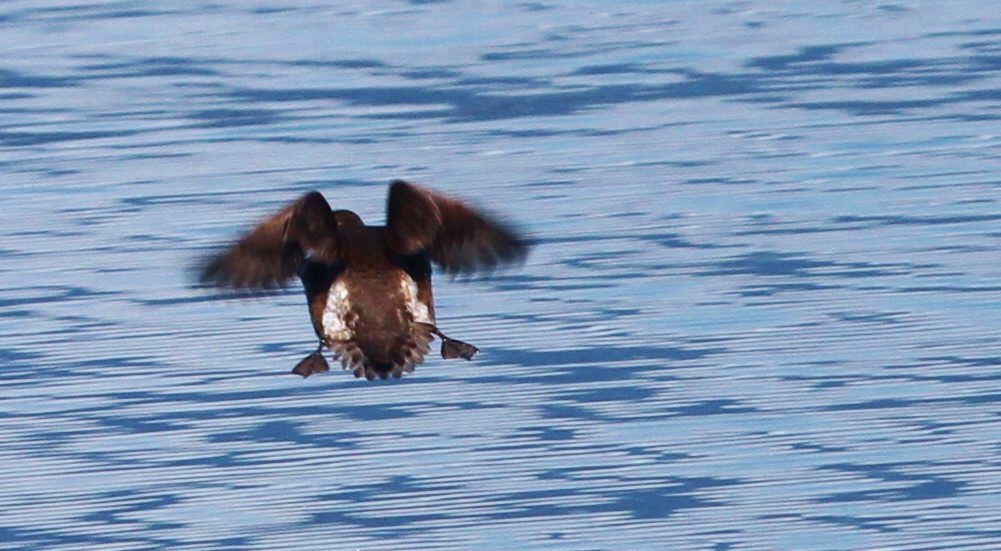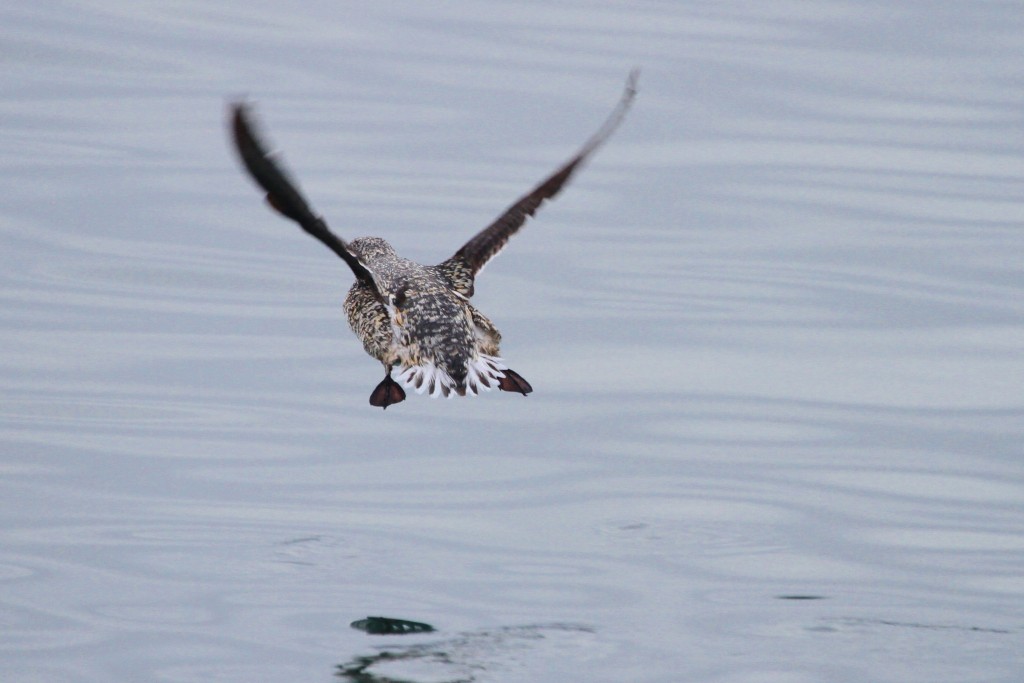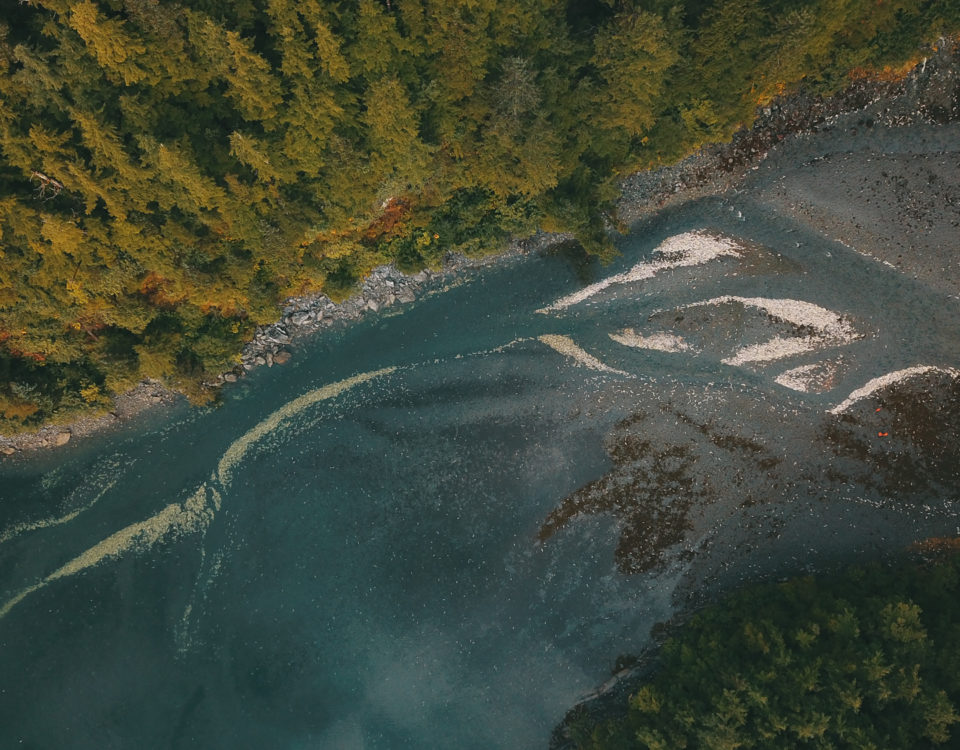Seabirds Bring Scientists Together

In explaining the importance of this project, Schaefer says that “monitoring seabirds tells something about what’s happening in the ocean.” Scientists often use indicator species as a proxy to determine the health of complex ecosystems, and in the marine world, they often look at seabird populations for insight. For this reason, Kittlitz’s murrelets have been selected

Football-sized Kittlitz’s murrelet in Glacier Bay National Park and Preserve. Photo credit: Anne Schaefer
as one of the 12 core vital signs monitored by the Southeast Alaska Inventory and Monitoring Network (SEAN). Several years ago these birds were candidates for protection under the Endangered Species Act, and although they were not listed, scientists continue to keep tabs on their low population numbers.
Schaefer has much experience working with these birds, both through this long-term monitoring project, and also from her graduate work at the University of Montana. From conducting research in Icy Bay to Glacier Bay, she has developed keen seabird observation skills, which she has been able to use when collaborating with researchers in the SEAN monitoring project. So what is actually involved in ‘keen observing’ skills when it comes to seabirds?
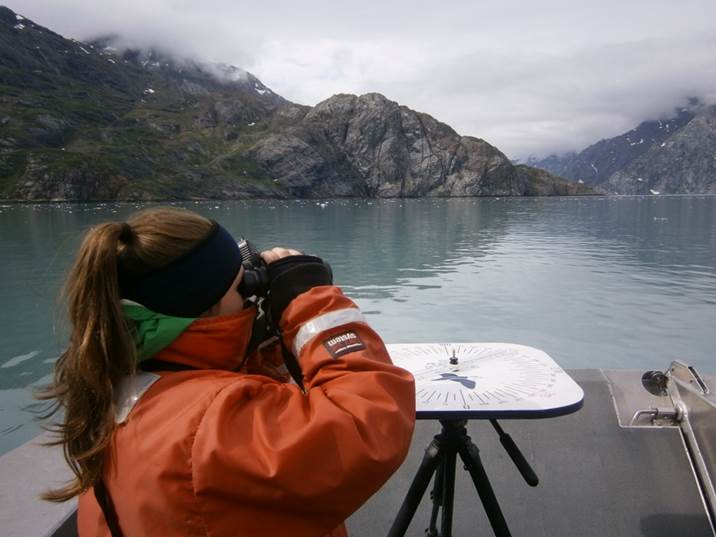
Working as an observer with SEAN scientists, Schaefer keeps her eyes on the water for seabirds in Johns Hopkins Inlet, Glacier Bay National Park and Preserve
The answer: patience and strong attention to detail. When describing her recent research stint in Glacier Bay National Park, Schaefer highlighted the importance of the daily accuracy check. Each day of surveys, researchers find calm water, throw out buoys with reflective tape, estimate the distance from the vessel, and then check the accuracy of their estimates using a laser range finder. She emphasized that they don’t continue with surveys until they all “get dialed in,” meaning they must estimate the correct distance from the vessel within 20% of the measured distance. This precision is important because consistent underestimation or overestimation of distances can result in biased abundance estimates.
While counting birds and estimating distances, two observers must work together, side by side on the bow of the boat. They use something called an angle board, which allows
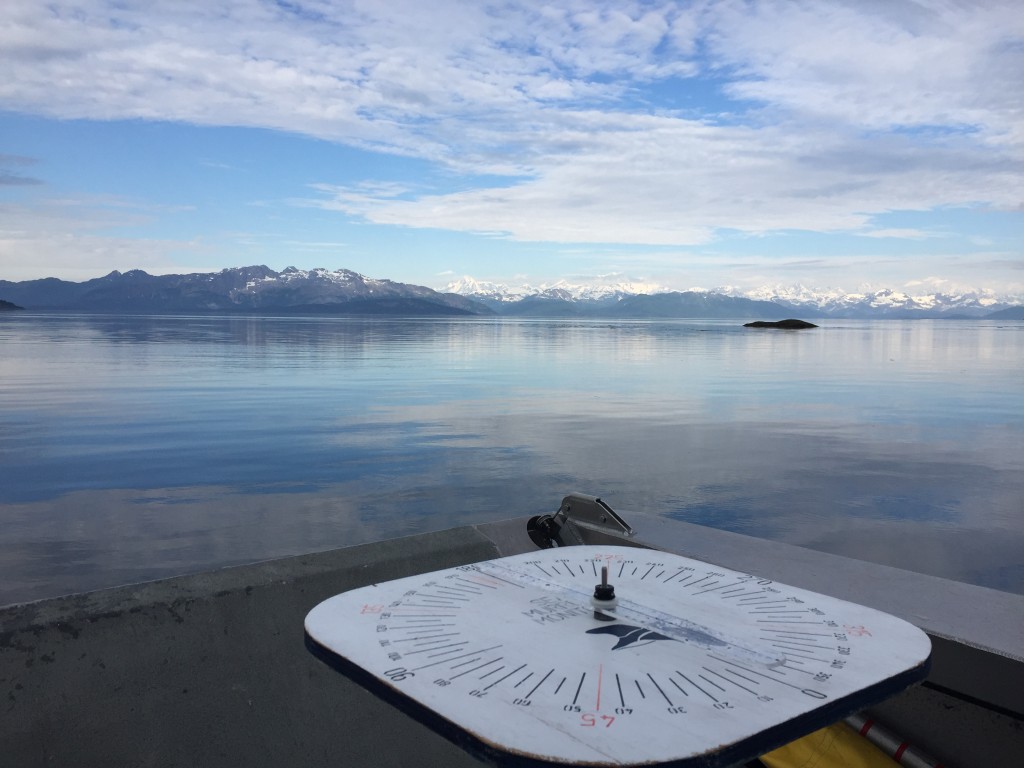
Angle board used to estimate a bird’s position relative to the research vessel. Photo credit: Anne Schaefer
observers like Schaefer to provide the identified bird’s direction and estimated distance from the vessel. Once details are determined, the observers use radios to call out murrelet identifications and distances along designated transects, so that the data manager inside
the boat can enter information into a data system.
Even with calm seas, identifying tiny birds from a moving vessel has its challenges. Naturally, when birds are farther away, identification is harder, but as Schaefer stated, “they do give you clues.” These clues fall in the audio and visual categories. Marbled murrelet have a high pitched ‘keer’ sound, while Kittlitz’s murrelets make a very “low groan sort of call.” The more sure-fire way of identifying them, however, is to watch carefully as the birds flush, or fly off the surface of the water; Kittlitz’s murrelets have white outer tail feathers while marbled murrelets have completely brown tail feathers.
Schaefer also applies her seabird observation skills to her research here in Prince William Sound, but mostly during the winter months. Schaefer explains the significance of this timing by stating that “winter is potentially a time when food is limited and conditions are harsher; seabirds are less studied then, so there was a need.” Maintaining a consistent data record is key for scientists to identify changes in ocean conditions, and Science Center researchers continue to build collaborative relationships with other scientists and agencies in the region to keep these records going. Schaefer has enjoyed working with SEAN scientists to help maintain the long-term monitoring of Kittlitz’s murrelets, which will ultimately inform conservation decisions and provide insight into the health of the oceans on which we all depend.


